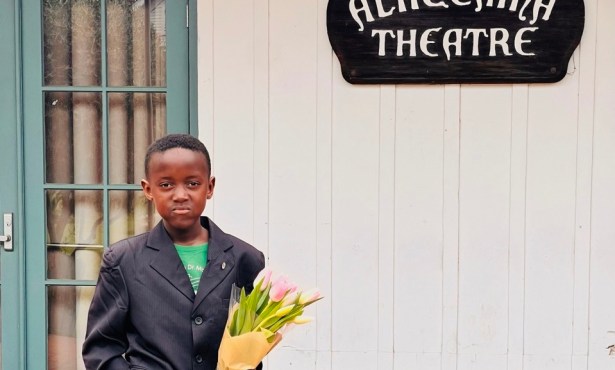‘Cooking Up a Tribute’
Codirectors Luis González & Andrea Gómez

The Roca brothers’ restaurant El Celler de Can Roca in Girona, Spain, is considered by many to be the best restaurant in the world. So when they decided to close down for a while to tour and set up dinners based on indigenous and popular ingredients in Mexico, Colombia, and Peru, a documentary crew funded by the Spanish bank BBVA just had to capture the creative culinary explosion that was certain to occur.
See www.elcellerdecanroca.bbva.com
Did you find new flavors that the local cooks were not aware of?
I think it was a mutual swap. The Rocas got new flavors, techniques, impressions, and feelings but they left amazing ways of reinterpreting the local cooking. I know that they were by Colombia. They discovered unknown flavors there and a huge wealth about products that were not being used in local cooking. The Roca brothers contributed a new point of view to use some of the ingredients that got the local chefs really impressed. They raised the quality of many plates with simple details using products that already were there but never were been mixed or used that way. It was really interesting.
Were the regional chefs happy to have you explore their cuisine?
I had no experience before in the “gastronomic world” so one of the most surprising things for me was the existing brotherhood between the chefs, at the upper echelons at least. It seems an absolute open world where everybody share everything: recipes, tricks, techniques.
Cocktails also got some attention, like the pisco-sherry drink. Was that a surprising twist?
That was surprising for all including Josep!. He prepared the cocktail for the first time just there, with the camera rolling. It could be a terrible mix, but we were lucky and worked enough to be a part of the Peruvian menu. It’s a very beautiful experience when you can witness a spontaneous and creative process with the Rocas. The process really started with Pepe Moquillaza in Pisco, Perú and ended with the final taste in Lima.
What did you learn about different cultures’ dining habits?
One really funny thing is the distance in a fine dining table. We use to think the there is some standards: you go to a restaurant and simply do not ask, you just assume that this is the space unless you feel really uncomfortable.
If you ask Josep he can made a whole dissertation on the subject: they configure tables at the Celler depending on the nationality of the tables, so it really matters. What is curious is the differences between countries. For instance, people in the U.S.A. tend to be closer than people in Bogotá, where they need to work with much wider tables for the same amount of guests.



